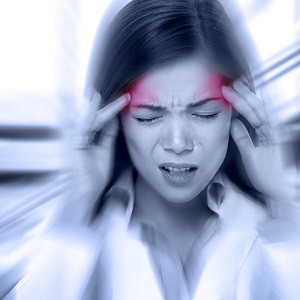
Headaches are one of the most common medical complaints; most people experience them at some point in their lives. They can affect anyone, regardless of age or gender.
The World Health Organisation (WHO) reports that almost half of all adults worldwide will experience headaches in any given year.
A headache can be a sign of stress or emotional strain, or it can result from a medical disorder, such as migraine or high blood pressure, anxiety or depression. It can lead to other problems. For example, people with chronic migraine headaches may find it difficult to attend work or school regularly.
Cause headache
Headaches can occur in any part of the head, on either side of the head, or in just one place.
There are different ways to define a headache.
The International Headache Society (IHS) categorises headaches as primary if they are not caused by another condition, or secondary if there is another underlying cause.
Primary headache
Primary headaches are independent conditions that are directly caused by overactivity or problems with pain-sensitive structures in the head.
These include the blood vessels, muscles and nerves of the head and neck. They can also be caused by changes in chemical activity in the brain.
Common primary headaches include migraines, cluster headaches and tension headaches.
Secondary headaches
Secondary headaches are symptoms that occur when another condition stimulates the pain-sensitive nerves of the head. In other words, the headache symptoms can be attributed to another cause.
A variety of different factors can cause secondary headaches.
These include:
- alcohol-related hangover
- Brain tumour
- Blood clot
- Bleeding in or around the brain
- "brain freeze", or ice headache
- Carbon monoxide poisoning
- Concussion
- Dehydration
- Glaucoma
- Influenza
- Overuse of painkillers, known as rebound headaches
- Panic attacks
- Stroke
Because headaches can be a symptom of a serious medical condition, it is important to see a doctor if they become more severe, regular or persistent.
For example, if a headache is more painful and bothersome than previous headaches, worsens or does not improve with medication, or is accompanied by other symptoms such as confusion, fever, sensory changes and stiffness in the neck, a doctor should be seen immediately.
There are different types of headaches.
Tension headache
Tension headaches are the most common type of primary headache. Such headaches usually start slowly and gradually in the middle of the day.
The person may feel
- as if they have a tight band around their head.
- a constant, dull pain on both sides.
- Pain that spreads to or from the neck.
Tension headaches can be either episodic or chronic. Episodic attacks usually last a few hours, but can last several days. Chronic headaches occur 15 or more days a month for a period of at least 3 months.
Migraine
A migraine headache can result in a pulsating, throbbing pain that usually only occurs on one side of the head. The pain may be accompanied by:
- blurred vision
- Drowsiness
- Nausea
- sensory disturbances known as auras.
Migraine is the second most common form of primary headache and can have a significant impact on a person's life. According to the WHO, migraine is the sixth leading cause of days lost due to disability worldwide. A migraine can last from a few hours to 2 to 3 days.
Cluster headaches
Cluster headaches usually last between 15 minutes and 3 hours, and they occur suddenly once a day to eight times a day for a period of weeks to months. There may be no headache symptoms between clusters, and this headache-free period can last for months to years.
The pain caused by cluster headaches is:
- unilateral
- severe
- often described as sharp or burning
- typically located in or around one eye
The affected area may become red and swollen, the eyelid may droop, and the nasal passage on the affected side may become stuffy and runny.
